Projects
Acute Heart Attack Detection (akuutin sydänkohtauksen detektointi)
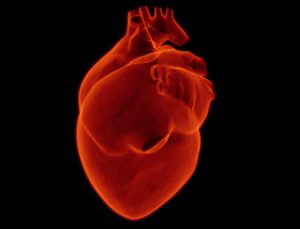
1.8.2019 – 31.1.2021
700 000 euros
Approximate Computing for Smart Edge Processing
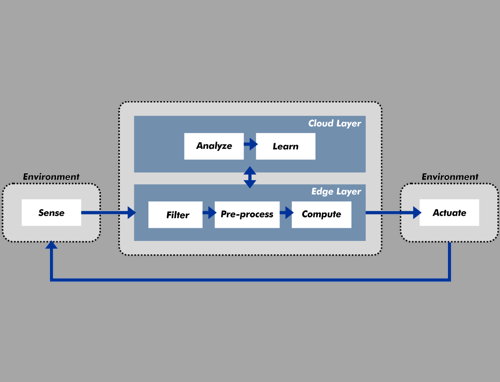
1.9.2017 – 31.8.2021
590 000 euros
Emerging application domains such as artificial intelligence, virtual and augmented reality, cyber-physical systems and Internet-of-things (IoT) etc., provide intelligence to machines and the environment in which they function by integrating sensing, computation and actuation capabilities. To make intelligent decisions and influence the environment meaningfully, these applications require high performance in real-time, beyond the scope of traditional computing applications. Ambient intelligence application domains, in particular in the context of Internet-of-Things, require high performance in real-time within lower energy budgets. Power challenges have limited the performance and energy gains of existing mobile processing platforms. Approximate Computing has emerged as an alternative that leverages inherent error resilience in computing applications to trade-off accuracy for performance and energy gains. We address the performance and energy issues of emerging applications and power challenges of existing hardware platforms simultaneously through approximate computing. The objective of this proposal is to implement hardware and software techniques to design an ecosystem that supports approximation. We orchestrate approximation in two steps, software layer – to identify and annotate approximable regions of applications, hardware layer- to exploit error resilient tasks by executing them on inaccurate hardware. We design modular reconfigurable processor cores, butterfly cores, that can switch their mode of execution from accurate to approximate on demand, based on application requirements and system dynamics. We integrate butterfly cores into a chip multi-processor, the butterfly processor, for high performance and flexibility in choice of quality of service. We bridge the gap among different layers of computing stack in realizing approximate hardware through architectural design and implementation of a general purpose approximate hardware. To support the run-time reconfiguration of processor mode (accurate and approximate), we implement hierarchical system management to optimize power, energy, performance and accuracy at the same time.
Internet of Cognitive Things for Personalized Healthcare
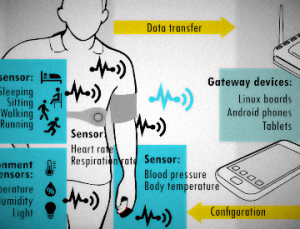
12.04.2017 – 31.12.2019
Quality of Experience (QoE) is a key metric for the successful delivery of end-user services for IoT-enabled applications. Achieving consistent end-user QoE poses tremendous challenges in the face of resource constraints and dynamic variations at multiple scales of the IoT system stack: at the application, network, resource, and device levels. This proposal outlines a self-aware cognitive architecture – the Internet of Cognitive Things (IoCT) – that delivers acceptable QoE by adapting to dynamic variations in infrastructural compute, communication and resource needs, while also synergistically learning and adapting to end user behavior. The approach leverages edge (i.e., Fog) computing architectures to introduce intelligence and adaptability in integrated multi-scale IoT systems. The objective is to efficiently manage information acquisition, communication and processing across different scales of the IoT systems, while synergistically coupling learning of end-user behaviors to deliver efficient and customized services. The proposed IoCT system is the first example of architecture where a network of algorithms communicates and collaborates synergistically to achieve a system-wide objective. Cognition and edge computing architectures are leveraged to introduce intelligence and adaptability in integrated multi-scale IoT systems, through a Personal Holistic Cognitive Optimization (PHCO) framework. To this aim, the IoCT will adopt recently proposed learning and control techniques (i.e. Deep Q-Networks), and exploit self-awareness principles to achieve effective system optimization. The project leverages on-going collaboration with the Turku University Hospital to demonstrate a personalized ubiquitous healthcare framework using the Early Warning Score (EWS) system for human health monitoring. Healthcare spending accounts for almost 17% of the GDP in the US. In healthcare, effective monitoring and observation of patients plays a key role in detecting a deteriorating patient. This project’s exemplar application on efficient early detection of these life-threatening signs can potentially save lives through better quality of care, and timely delivery of critical/urgent health indicators. The framework and services are also applicable to a broad range of other IoT application domains.
Link to Academy of Finland press release (available only in Finnish)
http://www.aka.fi/fi/akatemia/media/Tiedotteet1/2017/suomen-akatemia-ja-yhdysvaltojen-kansallinen-tiedesaatio-nsf-rahoittavat-yhdessa-langattoman-tietoliikenteen-tutkimushankkeita/
MEMS-based Intrafraction Motion Tracking for PET/CT and Radiotherapy
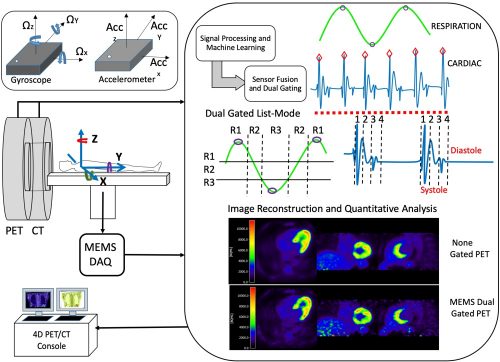
1.1.2018 – 31.12.2021
500 000 euros
In this project we develop new methods for motion compensation and gating in PET/CT imaging and radiotherapy. Our approach is based on measuring motions from multiple locations in the upper body using several highly sensitive inertial measurement units, and on fusing this information with that obtained from the PET/CT scanners.
With more accurate motion measurements available for PET/CT imaging, multiple gains can be achieved. Improving the quality of PET/CT images in both cardiology and oncology is beneficial for standard uptake value quantification and image quality, resulting to more accurate diagnosis and treatment decisions.
Modular Interoperability framework for Healthcare Cyber-physical systems

This project is funded by Academy of Finland from 1st Jan. 2016. (http://www.aka.fi/en-GB/A/)
Cyber-physical systems are promising approaches for human beings to reach out to the physical world through digital components. It enables the transformation of our lives in many aspects. One of the benefits is in healthcare domain; various sensors connected to a patient read vital physiological signs, communicate and allow physicians to remotely monitor patients. However, there are challenges to realize this vision of a collaborative Cyber-physical system. Interoperability is one of the obstacles faced by Cyber-physical systems. Due to variations in platforms, protocols and data formats, the heterogeneous components of a Cyber-physical system cannot work together. Moreover, the majority of the devices are resource constrained. This restricts the possibility of using already existing interoperability frameworks.
The aim of this project is to build a modular framework that bridges the heterogeneity of components at different layers of interoperability; technical, syntactic and semantic interoperability. Our initial implementation of a lightweight interoperability framework, LISA, which is inspired by Network on Terminal Architecture (NoTA) serves as the base for InterSys framework. InterSys will be tailored to healthcare requirements and with additional modules to support multiple combination of platforms/protocols.
Research Partners:
Department of Information Technology, University of Turku, Finland
Department of Information Technology, Åbo Akademi University, Finland
iPack VINN Excellence Center, Royal Institute of Technology (KTH), Sweden
School of Information Science and Technology at Fudan University, China
VTT Technical Research Centre, Finland
University of Bologna, Italy
Personalized pain assessment system based on IoT
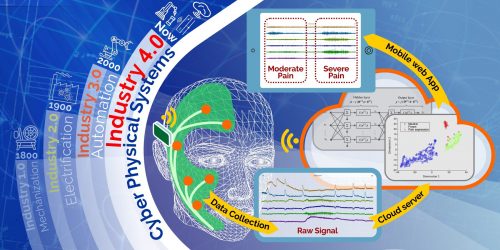
1.1.2018-30.12.2019
500 000 euro
Pain is an unpleasant sensory and emotional experience usually arising from actual or potential tissue damage. Pain, especially the acute and nociceptive type, is perceived from pain receptors in the body and is interpreted by the brain, which could be affected by multiple factors such as emotional state, memories of previous pain, and culture. Due to this reason, pain is considered to be subjective and has been believed as “whatever the person experiencing it says it is”. However, not everyone can report their pain. Self-report fails in cases where people cannot communicate by any means, for example, critically ill patients and people with limited cognitive ability. Therefore, in this condition, caregivers have to speculate the pain empirically from the patient’s behaviors and the vital sign change. This project aims at automating this empirical procedure by leveraging sensing technology, Internet-of-things technology, as well as health data analytics.
Project – Personalized pain assessment system based on IoT (PASI) is funded by the Academy of Finland from January 1st, 2018 to December 30th, 2019, and is a continuation of our previous Academy of Finland project, Smart pain assessment based on IoT (SPA). As a cutting-edge application and interdisciplinary research, the project connects partners from Nursing Science researchers, the University Hospital at the University of Turku, Finland, and the University of California, Irvine, U.S., with close cooperation.
Preterm Birth Prevention in Everyday Settings

1.1.2018-31.12.2019
Preterm birth (PTB) is the most common cause of neonatal deaths. Due to the high rate of PTBs (15M/y), it is extremely beneficial to identify the women at risk at early stage and prevent PTB. Physiological parameters could help us to uncover and model multifactorial processes that lead to PTB. Continuous monitoring of such parameters holds significant promise to successful prevention. Internet of Things (IoT) technologies can be leveraged to create the ability to perform such monitoring throughout pregnancy. In this project, we tackle PTB issues by proposing an IoT platform tailored for PTB prevention for everyday settings. Our core contributions are 1) a customized architecture including a set of wearable electronic devices that are feasible for 7-9 months of continuous monitoring, 2) a personalized PTB prevention solution using artificial intelligence methods, and 3) a comprehensive performance assessment via implementation of this monitoring in clinical trials.
Site of Research: Department of Future Technologies (University of Turku), Department of Nursing Science (University of Turku), and Turku University Hospital (TYKS)
More information: Click Here
Wearable blood pressure monitoring

1.11.2018 – 1.6.2021
Cardiovascular diseases are the most common cause of death in the world accounting for approximately 30% of all deaths worldwide. Fortunately, many of these deaths could be prevented by early treatment and lifestyle choices. Elevated blood pressure, is both a symptom and a cause for many cardiovascular diseases and can lead to life threatening conditions such as heart failure, coronary artery disease and stroke. Approximately 2 million people suffer from hypertension in Finland and only half of them receive proper medication. Advancements in wearables and precision health solutions are currently transforming the health landscape and it is increasingly more possible to track changes in personal health conditions more accurately. The goal of this research is to develop and validate a new non-invasive medical instrumentation technologies for assessing hemodynamic status using new sensing principles and algorithmic techniques. We believe that new hemodynamic monitoring solutions for long term continuous monitoring, which has not been feasible before due to absence of suitable instruments, new improved precision health monitoring solutions can be achieved.